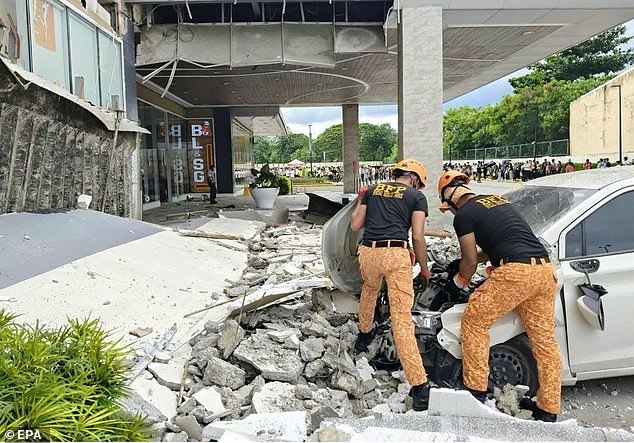A tsunami alert has been issued in the Philippines after a new 6.5-magnitude earthquake rocked the nation.
The earthquake, which had a depth of 10km, struck the southern region of Mindanao, on Friday, triggering tsunami warnings just hours after a previous alert was lifted.
Authorities warned of life-threatening waves while people in coastal areas have been strongly urged to immediately evacuate to higher ground and to move further inland.
Earlier on Friday, a powerful 7.4-magnitude earthquake hit the disaster-prone country, killing at least two people and sparking coastal evacuations.
The quake hit about 20km off Manay, also in Mindanao, at 9:43am (1.43 GMT), according to the United States Geological Survey, triggering regional tsunami warnings.
One person was killed when a wall collapsed in Mati city, the largest population hub near the quake’s epicentre, police said.
Philippine authorities issued a tsunami warning and ordered evacuations of coastal communities on the country’s eastern seaboard deemed at risk from waves of up to three metres high.

A tsunami alert has been issued in the Philippines after a new 6.5-magnitude earthquake hit the country as people are told to immediately evacuate to higher ground

Earlier on Friday, a powerful 7.4-magnitude earthquake hit the disaster-prone country, killing at least two people and sparking coastal evacuations
The Pacific Tsunami Warning Center later lifted its alert for the Philippines, Palau and Indonesia at around noon, saying ‘there is no longer a tsunami threat from this earthquake’.
A government event at the city hall was thrown into chaos as ‘the people panicked, they screamed and ran,’ Wes Caasi, a local official in Tagum city, northwest of Manay, said.
He said he saw city workers scrambling down a 202-metre-high metal Christmas tree they were decorating when the quake struck.
Students and workers poured out of schools, office buildings and shopping malls when the earthquake struck.
So far, the tremors seem to have caused minor and scattered damage.
Power and communication lines had been severed and authorities were struggling to assess the damage in some areas, Dianne Lacorda, a police officer in Davao Oriental province, said.
The provincial government suspended classes ‘until further notice’ and had sent non-essential public workers home.
Christine Sierte, a teacher in the town of Compostela near Manay, said she was in the middle of an online meeting when the violent shaking started.
‘It was very slow at first, then it got stronger…. That’s the longest time of my life. We weren’t able to walk out of the building immediately because the shaking was so strong,’ she said.

The earlier quake triggered tsunami warnings after it hit about 20km off Manay, also in Mindanao, at 9:43am (1.43 GMT)
‘The ceilings of some offices fell, but luckily no one was injured,’ she said, adding that some of the school’s approximately 1,000 students ‘suffered panic attacks and difficulty in breathing’.
Kath Cortez, a local journalist based in Davao city to the west of Manay, said that small cracks had appeared in the ground floor walls of her family’s home.
‘I was surprised by the strength’ of the quake, she said, adding that members of her family ran out of the house.
Around the same time as the Philippine quake, USGS reported a shallow 6.2 magnitude tremor just over 140 kilometres southeast of Manus Island in Papua New Guinea.
Another quake struck on Tuesday near the Papua New Guinea’s second-largest city of Lae. No major damage was reported.
The latest Philippine quake struck 11 days after a 6.9-magnitude one killed 74 people and destroyed or damaged about 72,000 houses in the central island of Cebu.
Earthquakes are a near-daily occurrence in the Philippines, which is situated on the Pacific ‘Ring of Fire’, an arc of intense seismic activity stretching from Japan through Southeast Asia and across the Pacific basin.
This article was originally published by a www.dailymail.co.uk . Read the Original article here. .

